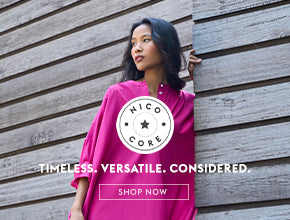Heritage Chic
THE POTTER WAS upset. It was the early 1990s and her little pottery store at the Santushti Shopping Complex in Delhi’s diplomatic neighbourhood of Chanakyapuri was under attack. The person in charge of operations refused to let Anita Lal display her large handmade pots and urns outside the shop along the pathway, insisting that Lal could only sell pottery that would fit into the small shop. A psychology post-graduate and student of Delhi Blue Pottery, Lal made a decision: “I can either feel sorry for myself or do something about it.”
So the mother of three travelled around India researching all types of decorative, hand-painted, smaller sized pottery, went back to her farmhouse, and came up with a plan. The incident sparked off the foundation of one of India’s leading home décor brands, Good Earth, the one that was picked by Prime Minister Narendra Modi to have tea in as he discussed the ‘Make in India’ campaign with German chancellor Angela Merkel at the Hannover Messe trade fair two years ago. It also led to the development of a new concept of Indian luxury: a globally relevant version of ancient Indian patterns, weaves and colours. Good Earth did for luxury home décor what Fabindia and Anokhi had done for textile and clothing a decade earlier—bridge the rural-urban divide by channeling traditional production techniques with contemporary functionality and design, and open up a world market for Indian craft. But with its very high quality and sophisticated aesthetic, Good Earth also managed to create a new niche for itself in the luxury space, a fine example of what a determined woman can do in the face of odds.
Daughter of an English professor from Pune and the wife of Delhi-based industrialist Vikram Lal, Anita began producing studio pottery and home décor with a distinctive Indian flavour as a unit of her husband’s family concern, Eicher Goodearth Pvt Ltd, part of the Eicher Group. In 1996, when Vikram turned down a real-estate space in Kemps Corner, Mumbai, as an outlet for Eicher Motors’ Royal Enfield bikes, Anita decided to use it for her first store. “It was an extremely risky business decision. Imagine running a store in Mumbai while based out of Delhi,” she says. Those were trying times for her fledgling business, the 68-year- old recalls, seated in her office at Tulsi Farms in Sultanpur Estate, Mehrauli, Delhi, which is quite unlike any luxury firm’s corporate office. There is an old tree in the room, which goes up through the ceiling before branching out into a green umbrella of shade above. The chairs are upholstered in the soulful colours of traditional Indian weaves. Glass walls look out into a central verandah where another large tree stands encircled by a cozy huddle of office rooms, most of which are laden with climbers. The company’s connectedness with nature, the ‘good earth’, could not be more apparent.
Drawing design inspiration from her travels and her favourite books, Anita added new products such as tableware and bed and bath linen. But she struggled for six to seven years with manpower, supply-chain management and bridging the mindset gap between the studio and the shop. Until her firstborn Simran joined her. After completing her master’s in the art history from the University of Bangalore, Simran had studied product development and merchandising from New York’s Fashion Institute of Technology. She was the right partner Anita needed to take a brand built on art and passion, and endow it with clever visual merchandising and a professional approach to business.
Together, they streamlined processes and opened up 10 Good Earth stores around India, with retail partnerships in Turkey and China. They made another risky business decision: taking up 20,000 square feet of retail space in Raghuvanshi Mills in Mumbai. “Now that we had such a spectacular space, we had to fill it up,” says the elder Lal. With double-height ceilings on both floors of the store, which was set in a defunct mill and is now the brand’s flagship property, the mother-daughter duo were forced to go full steam on production and merchandising. It was a shrewd move in retrospect: the area soon became a hub for luxury furniture and upmarket eateries, and a fine spot for a brand
like Good Earth to be present. They began making a range of wall coverings, cushions, décor items, kids’ products, a beauty range Amritam, even books and a line of ‘Kansa’ utensils using bell metal alloy. All these products were results of craft collaborations in different parts of India, and driven by Anita’s passion and taste. Their stores play music curated personally by Anita and soft fragrances greet customers as they walk in. In 2007, they set up a wine café in the Mumbai store, and the connection between Good Earth and good food took firm root. Their clientele initially came from ‘old money’, those who were accustomed to traditional Indian riches around the house and had an appreciation for culture, but gradually grew to include international audiences and upwardly mobile Indians who were seduced by the qualities Good Earth stood for, its Indian flavour and international class.
In 20 years, the brand never had to design a single advertisement: “We wanted to design beautiful things and let people find us,” says Anita Next, they invited likeminded business partners, such as ethnic luxury labels Raw Mango and Anavila, among others, to retail from their space. It was a critical decision, which linked Good Earth with the mavericks in Indian fashion who had managed to present traditional Indian clothing as luxurious works of art. When Anita grew frustrated at not getting ready- to-wear fine clothing in her own size and sensibility, she began making her own. This went on to become their clothing line Sustain, initially meant only for larger women. “But then Simran convinced me to make it in smaller sizes as well,” says Anita with a resigned look, “and so I gave in.” However, fashion is still a limited part of the Good Earth oeuvre. In 20 years, the brand never had to design a single advertisement: “We didn’t want to be obvious. We just wanted to design beautiful things and let people find us,” says Anita. “One has to be authentic,” adds Simran of the brand’s signature aesthetic, which found takers in high places. In 2014, Good Earth was commissioned to participate in the renovation of Jaipur’s Rajmahal Palace, where they used surface- patterning to create ‘jewel-like’ rooms. In 2015, the Oscars team invited Good Earth to share a gift bag with the guests at the Academy Awards. They also partnered with the Victoria & Albert Museum for an exhibition titled ‘The Fabric of India’, which showcased handmade textiles from the subcontinent from the third century to the present day.
ALONG THE WAY, the demands of social media and technology caught up with the brand, which so far had grown organically, and as Anita says, “was not designed to be scalable”. Groomed in her mother’s love for Indian culture, Simran began experimenting with a new line of modern, minimalistic garments that would appeal to a younger, globally networked audience. By this time, she was married, had two little sons, and had begun exploring online retail. “But something was missing. We were really struggling with the digital aspect of it,” says the 45-year- old CEO of Good Earth. Realising her growing company, now with 700 employees and an annual turnover of Rs 150 crore, needed a different kind of expertise, Simran turned to her venture capitalist husband, Raul R Rai. With an MBA from Harvard Business School, Rai had worked for over 15 years in the US and UK in investment banking and private equity focused on tech, telecom, media and retail. At first, he helped Good Earth with an elegant new look and feel for its web boutique. Then, drawn to the concept of creating something that could represent global India, he and Simran decided to set up a new line of clothing and accessories, a label at the junction of design and technology, online and offline. “We wanted to be a new Indian sensibility that was not necessarily Westernised,” says Rai.
And so, Nicobar was born. Rai met about 250 candidates over four months to put together Nicobar’s core team of 10. “I was looking for someone at ease with both design and digital. India is always associated with Bollywood, cricket and kitsch but we wanted to go beyond that; we wanted to create a modern Indian way of living, dressing and looking at the world,” says the 48-year- old Baker Scholar, who became the CEO of the new entity, with Lal as creative director. The first person they got on board was designer Aparna Chandra in August 2014. Famous in the 1990s and early 2000s for her clothes that spelt easy simplicity, it took just four minutes into a meeting with Rai and Lal to convince her to come on board.
“We’ve done two things right—that’s in the creation of a team and a culture, says Rai matter-of- factly, highlighting that eight out of 14 members of the leadership team are women. Hints of American corporate culture are evident in Rai’s entrepreneurial approach, not only due to his long-term view in choosing brand over revenue and potential over achievement, but also in his collaborative style. Dressed in old sneakers and casuals, Rai has not marked out any corner office for himself at the Nicobar headquarters at Tulsi Farms, which is a stone’s throw from Good Earth’s offices. Like the mother concern, Nicobar’s two-storey office is built amidst tall, old trees, and parts of it, such as the large stairway in the middle of the hall, have been left deliberately unfinished, “because we are still a work in progress”, as Rai puts it. The hundred-or-so staffers are mostly young, and walk about dressed in interesting clothes, coloured hair and flat shoes, laptops in arm. They are encouraged to work anywhere around the expansive property, where you are as likely to bump into a gardener as a web designer, and where dusk is marked with the cacophony of a thousand birds. The conference room has a sunroof and unmatched upholstered chairs, and the photo studio is resplendent with the smell of flowers and freshly baked desserts being readied for a shoot. The culture of the contingent speaks much about the brand’s timeless and relaxed vibe: all fabrics in Nicobar’s fashion range are natural and breathable; the colour palette is soothing and neutral with a brief pop of colour; the silhouettes are light, fluid and effortless. The products would be at home anywhere in the world, and yet are unmistakably Indian.
Launched in March 2016, Nicobar now has four stores—the first in Mumbai’s Kala Ghoda district, followed by one in Delhi’s Meherchand Market. The third was built above Good Earth’s Bangalore studio, where they noticed a quick uptake in footfall for both brands as new clients came in for one and happily discovered another. A fourth store has just been launched in Jodhpur, and five more are to follow this year. Unlike Good Earth, which focuses on home décor, almost 70 per cent of Nicobar’s product range is clothing. The new team has held 11 pop-ups so far, including in Goa and at the Kochi Biennale. More importantly, the company is profoundly focused on its digital presence and e- retail, with a large technology and content team that works closely with its designers to ensure a consistent voice. They are also committed to being part of a larger ecosystem that they believe represents new India. Their blog and magazine Nico Journal features several kindred brands – from bakeries to yoga studios to fashion designers—and their offices and stores often host free- of-cost events held by music communities such as Sofar and art forums such as Kommune.
Just as Good Earth was part of a larger movement in Indian design, its off-shoot Nicobar is poised at the next stage of evolution in the way designers have adapted Indian aesthetics to international sensibilities. From niche designers such as Eka and Anomaly to award-winners such as Suket Dhir and clothing companies such as Nicobar, the design mavens of this new generation have a studiedly quiet voice and digital-savvy storytelling technique. Their Indian roots are evident in the fibres and textures they use; their global exposure is clear in their colours, fits and cuts. “My love for India,” says Anita Lal when asked about the legacy she wants to leave behind. “I want to present the best of India, its depth and beauty, to the world,” she adds, gesturing towards Good Earth and Nicobar products around the room. Inspired by tradition and designed for the new world, their Made in
India tags are a story of both promise and pride.



















